0%
Vuorox is a shift planner for healthcare and social service companies based on in-depth AI. Product is developing by Finnish startup company 'Plain Complex' founded in 2021.

Research
The process began with benchmarking similar scheduling tools like Maraplan, Tokoman, and Tekla, revealing that most use a list view for mobile schedules.
To understand real-world workflows, employees from supermarkets, public transport, and restaurants were interviewed. However, these industries still rely on printed schedules, making them less relevant to the case.
Insights from interviewing three nurses uncovered key practices:
1. Wishlists are filled every three weeks, with a one-week submission window.
2. Employees can request up to three preferred days off, though approval isn’t guaranteed.
3. Nurses are categorised (A, B, C) based on experience, with shift distribution adjusted accordingly.
Currently, wishlist submissions rely on a single shared computer in the supervisor’s office.
To understand real-world workflows, employees from supermarkets, public transport, and restaurants were interviewed. However, these industries still rely on printed schedules, making them less relevant to the case.
Insights from interviewing three nurses uncovered key practices:
1. Wishlists are filled every three weeks, with a one-week submission window.
2. Employees can request up to three preferred days off, though approval isn’t guaranteed.
3. Nurses are categorised (A, B, C) based on experience, with shift distribution adjusted accordingly.
Currently, wishlist submissions rely on a single shared computer in the supervisor’s office.
The original interface’s complexity and poor responsiveness caused confusion in the testing version, leading users to miss shifts and struggle with the new digital wishlist feature.
The primary goal was to redesign the schedule for better clarity, ensuring users no longer miss shifts, can easily follow their schedules, and find the wishlist feature intuitive.
The primary goal was to redesign the schedule for better clarity, ensuring users no longer miss shifts, can easily follow their schedules, and find the wishlist feature intuitive.
Research
UX/UI design
UX/UI design
Goal
Role
Original design review
wishlist settings
wishlist
Wishlist preferences are accessed via the upper-left menu, where users adjust sliders to select preferred shift types.
The wishlist uses unclear color coding and underlining—blue indicates the shift currently being set.
The schedule displays active shifts in the calendar, with only upcoming shifts shown below.
schedule
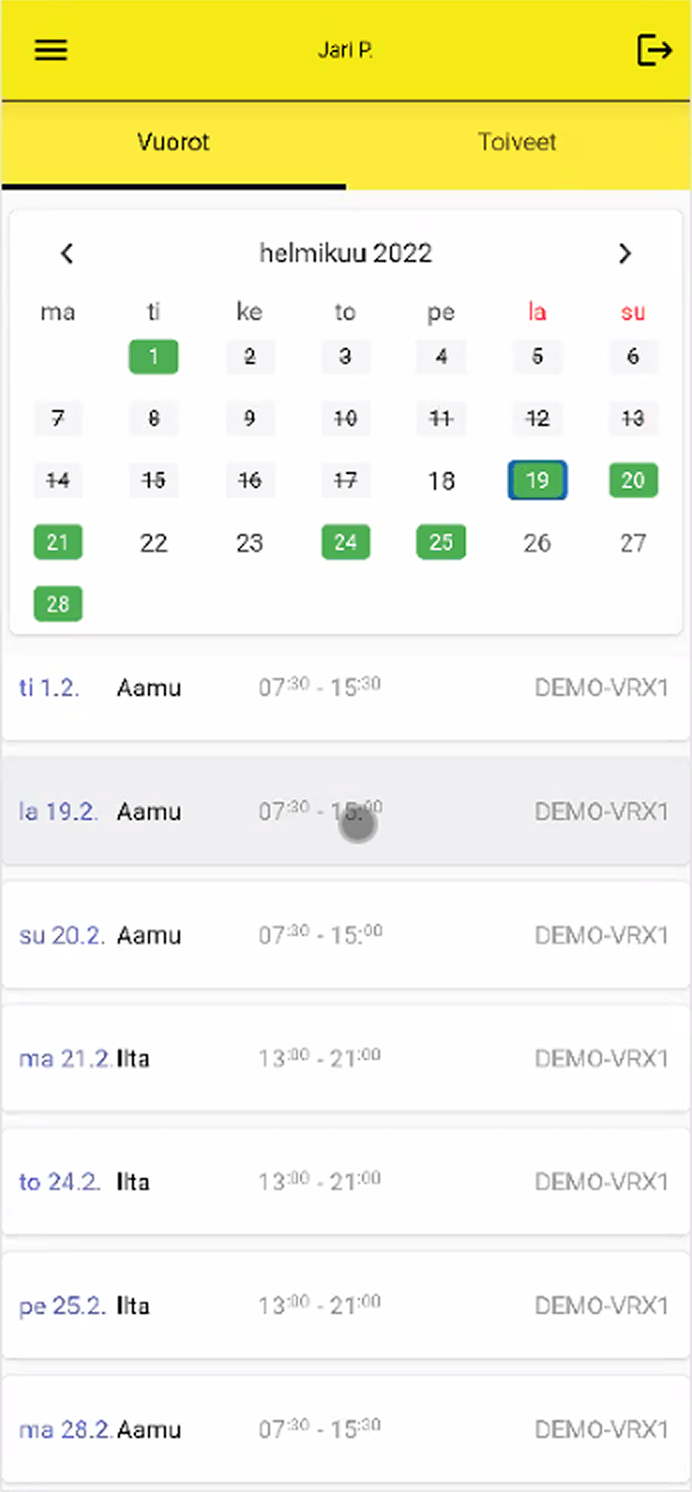
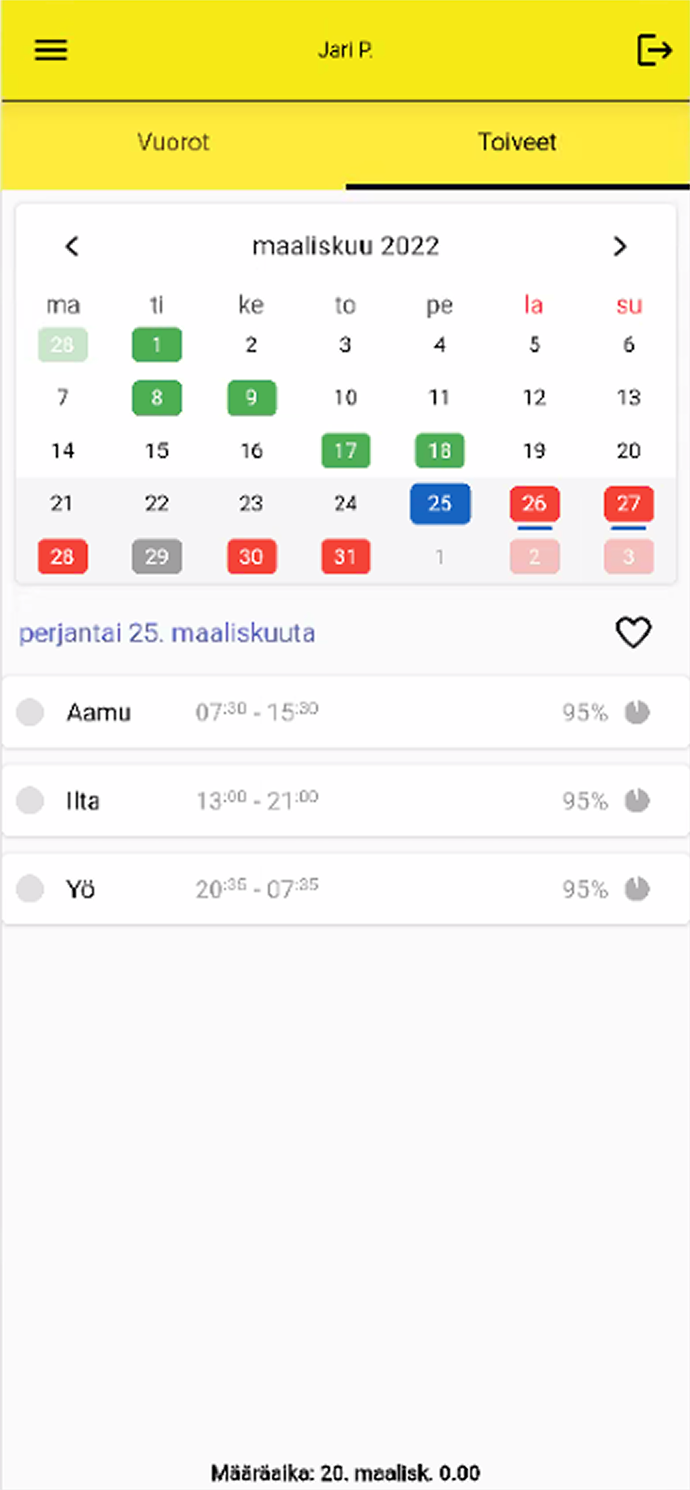
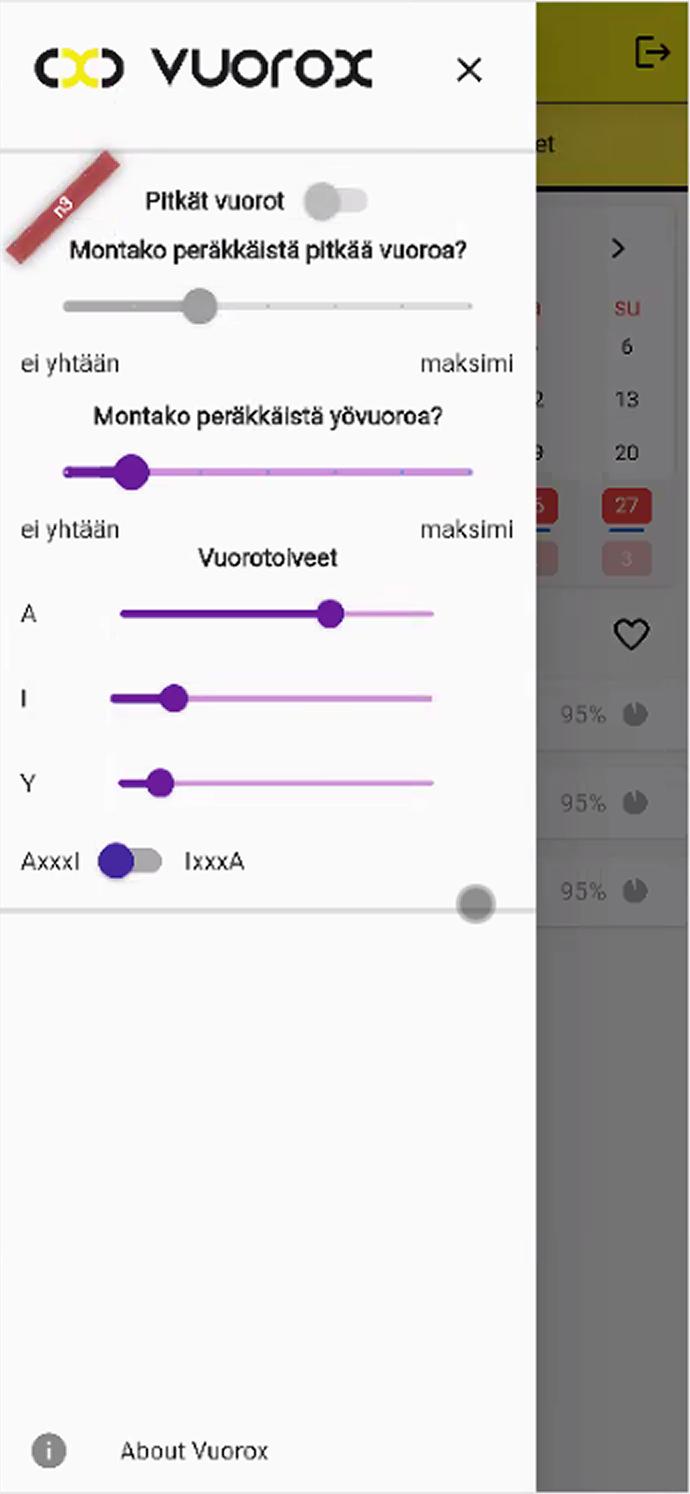
Solutions
The main schedule screen was designed as a list view, as it enhances clarity and ease of use. Tapping a shift card reveals the location, supervisor (with contact information), and shift type.
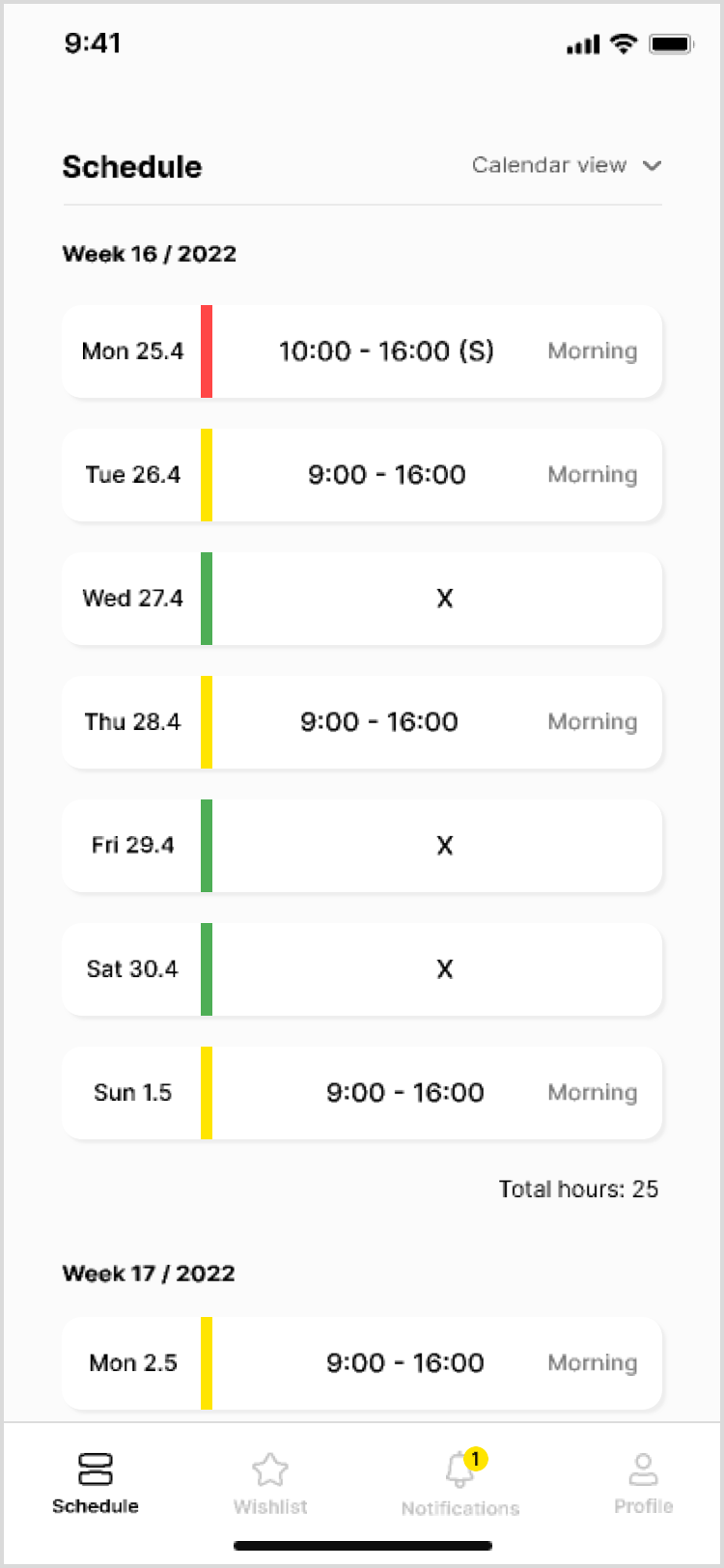
Colour coding
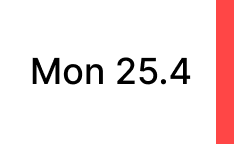
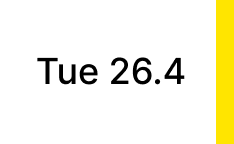
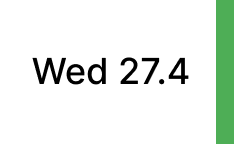
Green marks non-working periods such as X (day-off), VV (paid leave), and AH (annual holidays)
Yellow indicates all working shifts, including N (normal) and HW (holiday work)
Red represents sick leave, distinguished separately as it counts as a working day
Accessibility reference
Colorblindness tests confirm that this palette is effective, ensuring key shift types (working and day-off) remain highly distinguishable.
While red may occasionally blend with green in certain conditions (achromatopsia, protanopia, deuteranopia), sick leave shifts are clearly marked with an “(s)” on the shift card.
Colorblindness tests confirm that this palette is effective, ensuring key shift types (working and day-off) remain highly distinguishable.
While red may occasionally blend with green in certain conditions (achromatopsia, protanopia, deuteranopia), sick leave shifts are clearly marked with an “(s)” on the shift card.
Calendar
The calendar displays only working days, as rest days and holidays are considered time off.
For checking specific shift types (morning, evening, or night), the schedule list offers a more convenient view.
For checking specific shift types (morning, evening, or night), the schedule list offers a more convenient view.
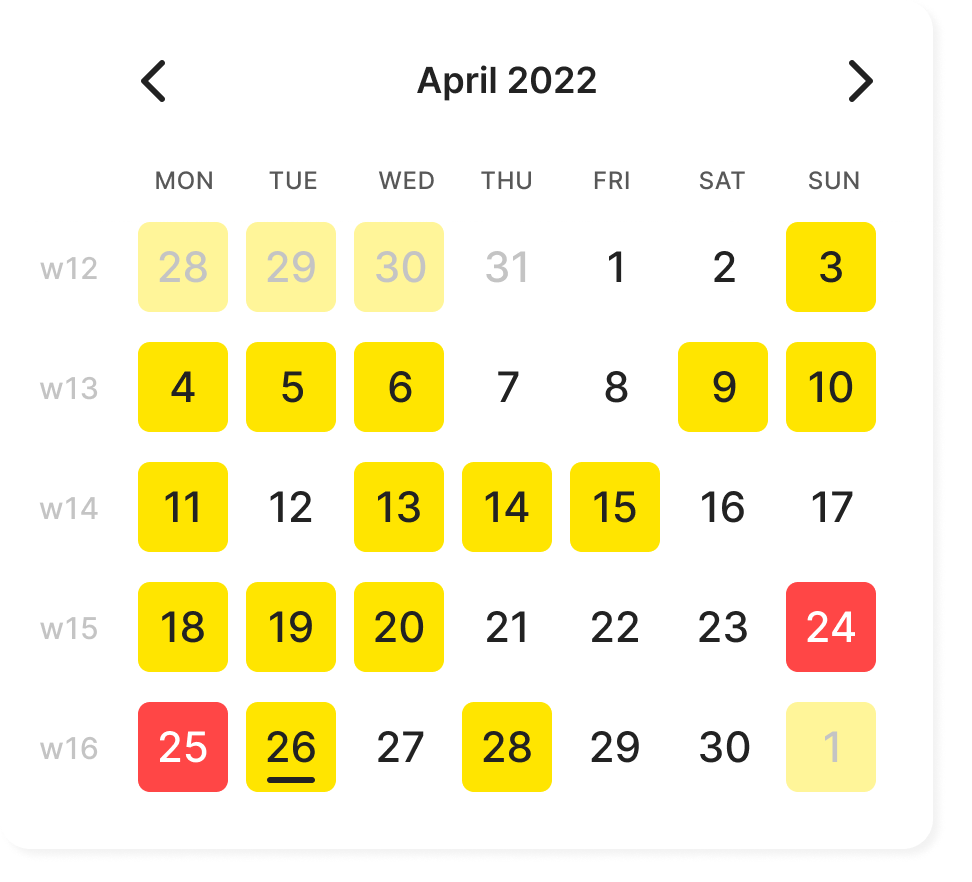
Wishlist
To fill a wishlist, users select a day and assign a preferred shift or day off. By default, each day is set to “Any,” allowing AI to automatically assign shifts based on user and company preferences.
Additional options include shift type selection and day reservation for annual leave.
Additional options include shift type selection and day reservation for annual leave.
Wishlists are organised into three-week periods, each with a set deadline. Users can create additional wishlists if further planning is needed.
Once a wishlist status changes to “approved,” the AI-generated schedule is finalised and can no longer be edited.
Once a wishlist status changes to “approved,” the AI-generated schedule is finalised and can no longer be edited.

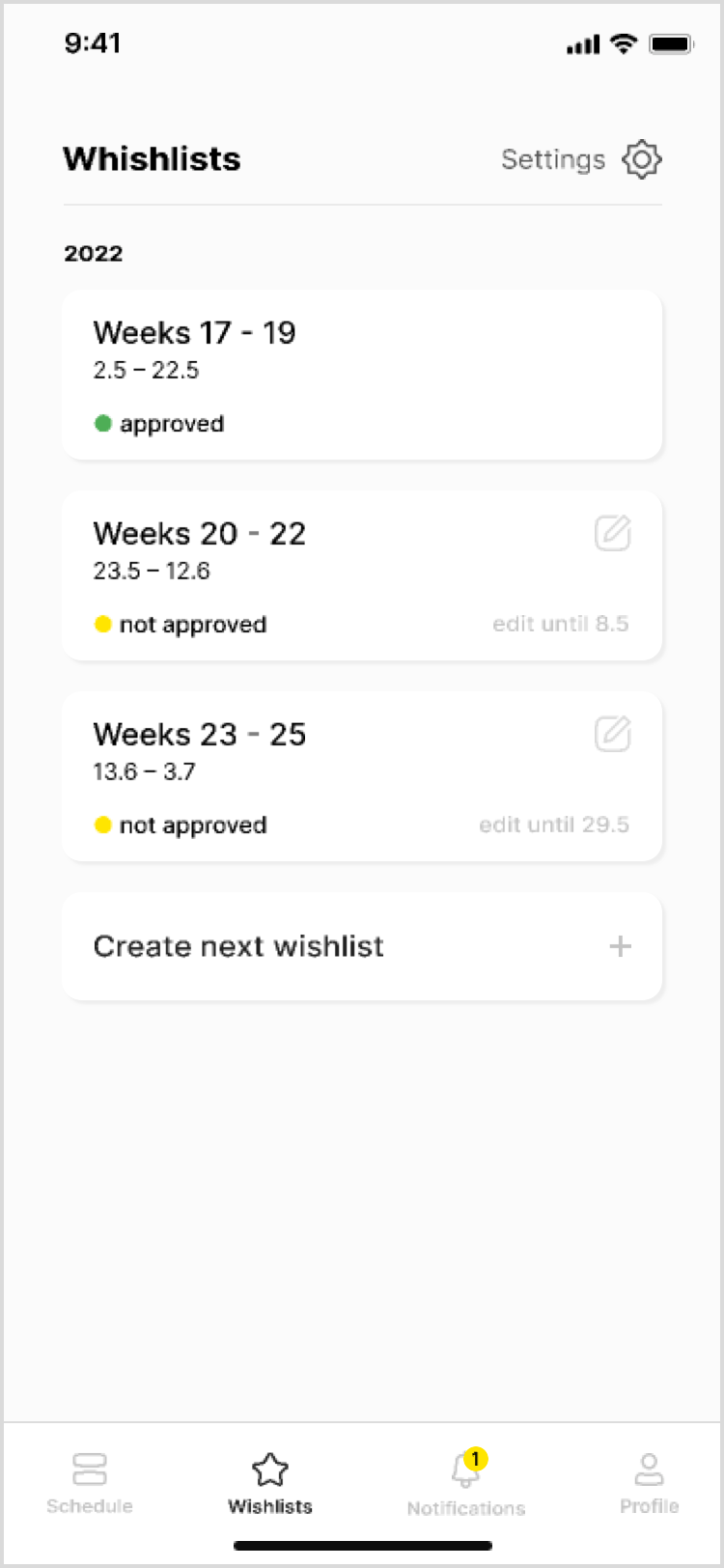
Wishlist settings
Settings define AI shift arrangement parameters through a dynamic questionnaire.
Users can specify preferences like shift types and long shifts, with new questions appearing based on previous selections—for example, if long shifts are chosen, the form asks, “How many?”
Users can specify preferences like shift types and long shifts, with new questions appearing based on previous selections—for example, if long shifts are chosen, the form asks, “How many?”
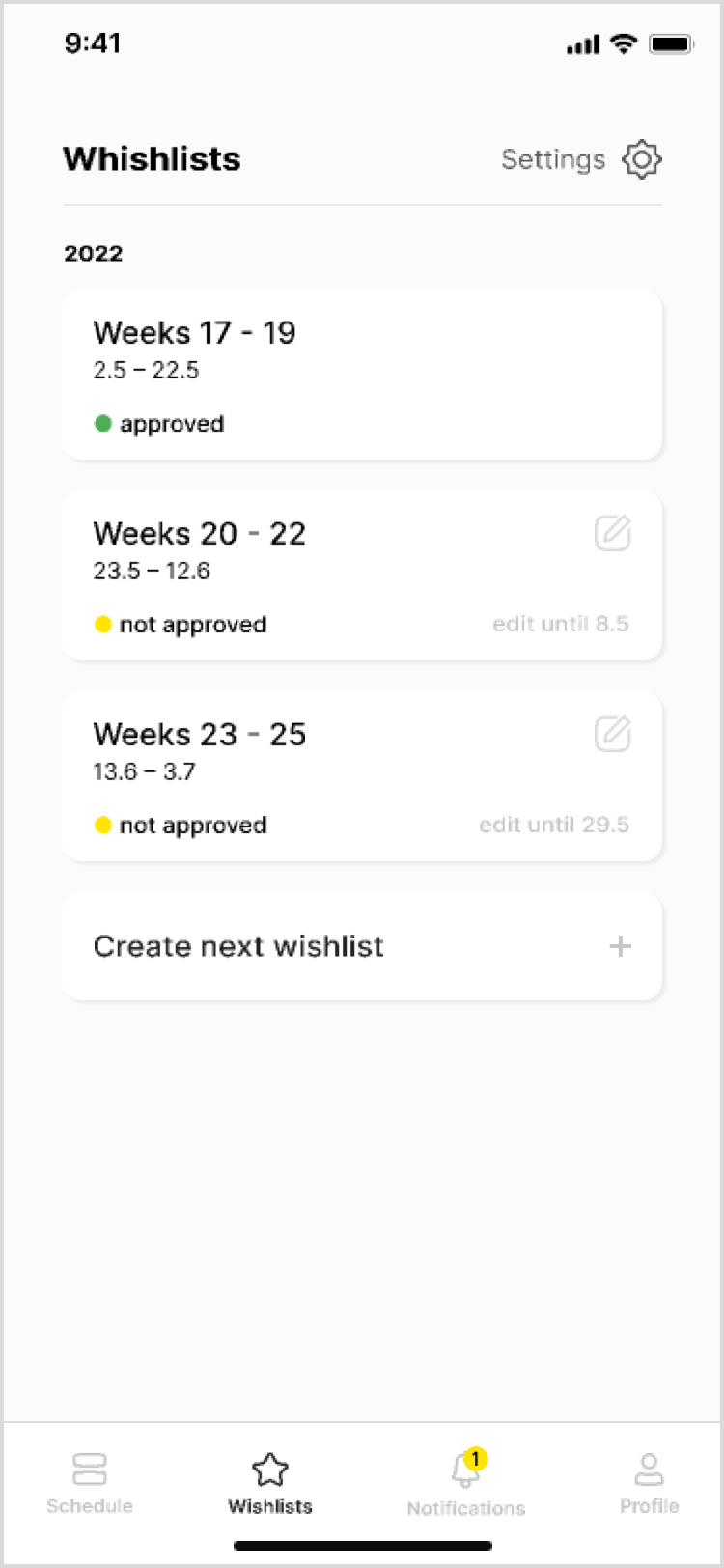
Conclusion
After presenting the concept, stakeholders were pleased with the improvements, recognising their potential to address existing interface challenges. The design was considered for further development.
The prototype was also shared with the interviewed nurses, who provided positive feedback. They noted that the new design significantly simplifies scheduling, making it more accessible and personalised compared to the current single-computer system.
The prototype was also shared with the interviewed nurses, who provided positive feedback. They noted that the new design significantly simplifies scheduling, making it more accessible and personalised compared to the current single-computer system.